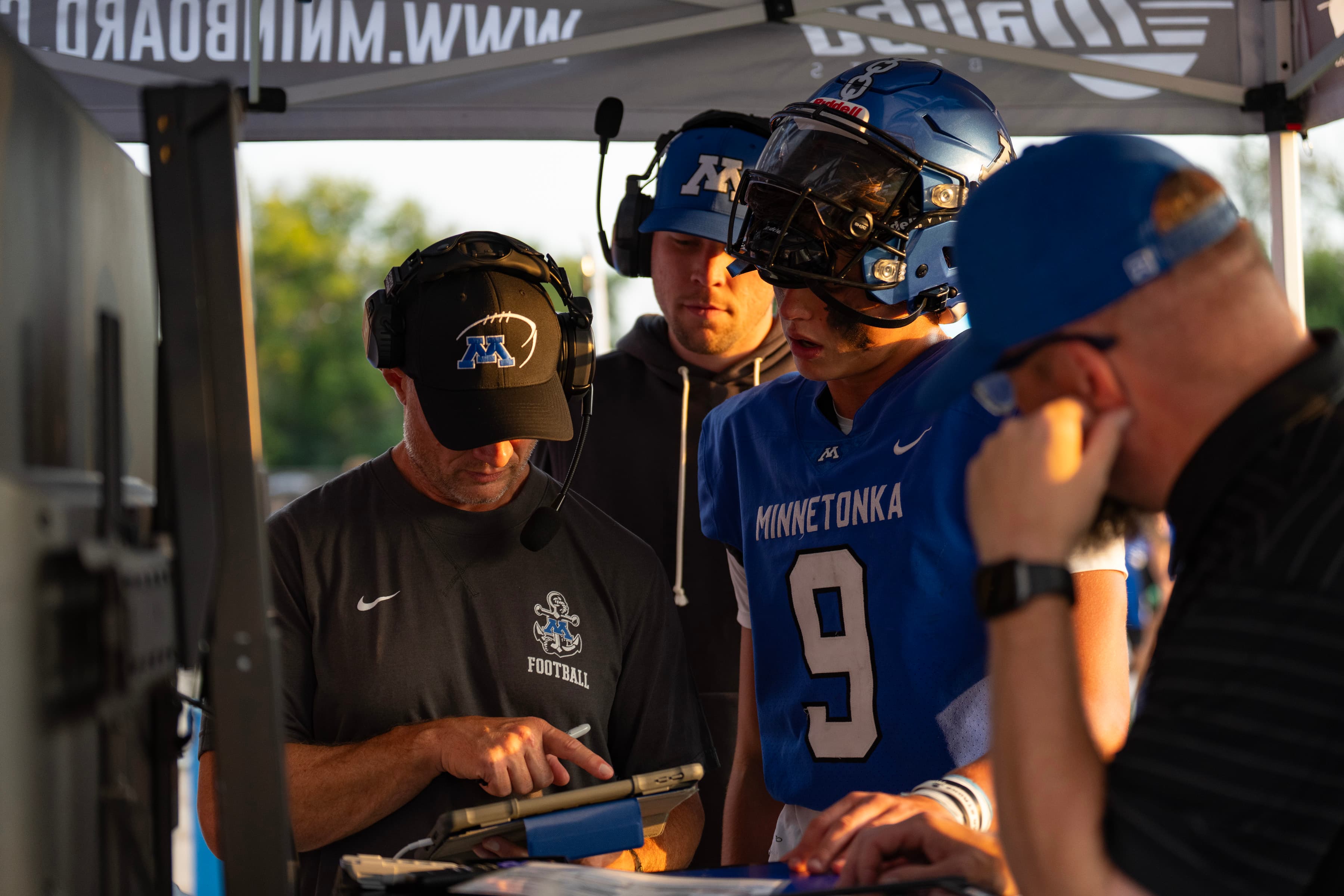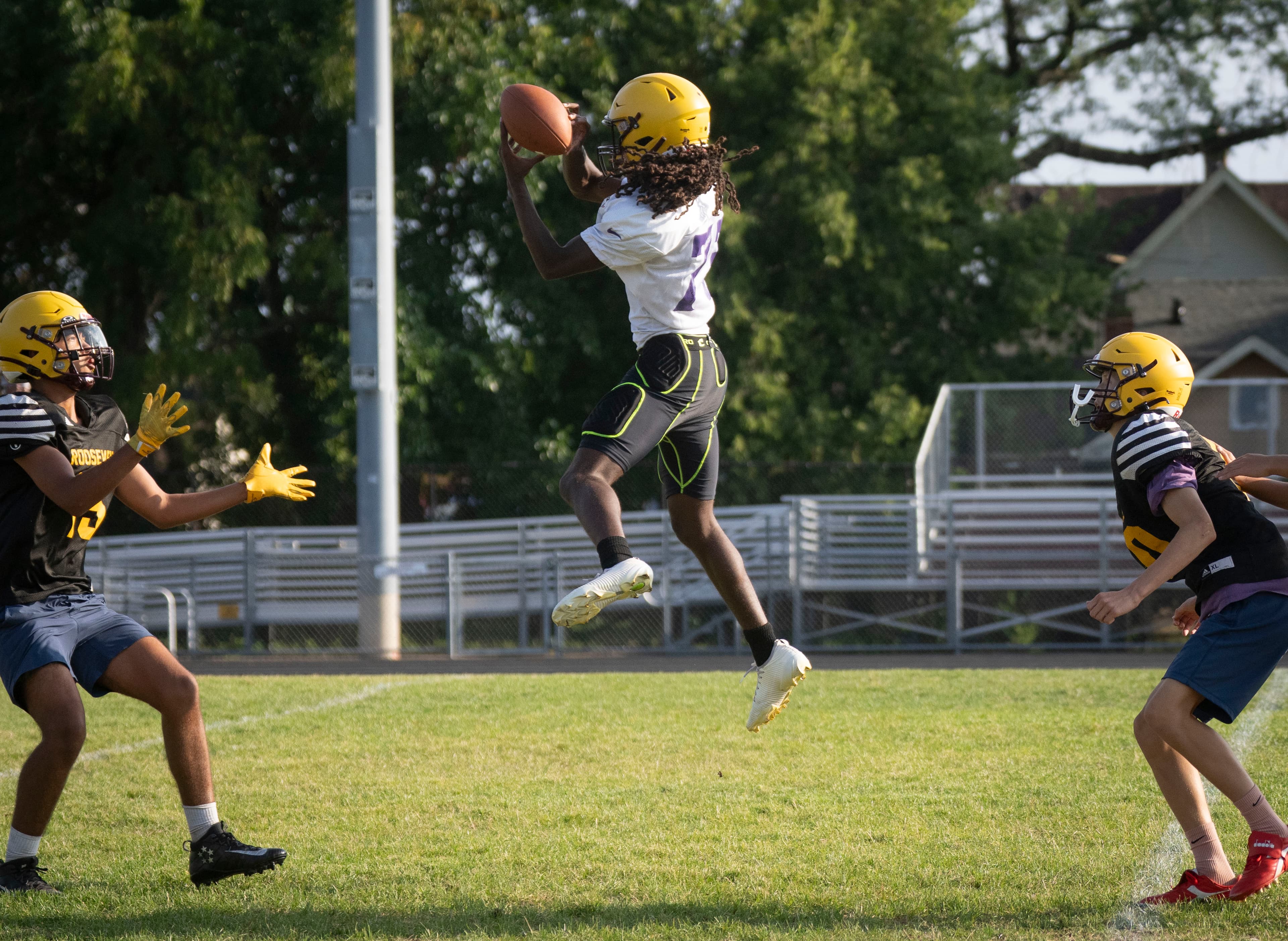High school football teams turning to technology to help win games
Strib VarsityIn today’s game, schools rely on drones, high-definition cameras and instantaneous replays.

By Jim Paulsen
The Minnesota Star Tribune
The days of high school football players huddled around their coach, eyes fixated on a chalkboard or dry-erase board as their coach diagrams plays and shouts adjustments, has come to an end, just like oversized shoulder pads and high-top cleats.
Modern-day coaches are now armed with internet-connected tablets that give them access to plays mere seconds after they occur. Large-screen televisions are common on sidelines, allowing coaches to address entire platoons of players at the same time.
If a correction needs to be made or a scheme changed, coaches have the information literally at their fingertips.
“With the system we use, there’s a lag time of five seconds from when the play happens to when it gets into our system,” Mounds View football coach Aaron Moberg said. “It’s an awesome competitive advantage. We can see plays and make adjustments in real time. We don’t have to wait to do them at halftime.”
The areas behind the end lines of football fields, typically reserved for bands, cheerleaders and field maintenance equipment, are now filled with towers standing roughly 40 feet that house remote-controlled, high-definition video cameras for recording games and practices.
Footage is uploaded and digitally stored, allowing coaches and coordinators to analyze plays and performances and create cut-ups, or edited highlight reels.
“It’s pretty incredible stuff,” said Norwood-Young America Central head coach Chris Goodwin, who was involved with filming games for the Gophers during the Glen Mason era. “We can make adjustments after one series. That’s huge.”
Decades ago, teams had to manually insert and remove film rolls and reels from cameras, send them to film processing labs and wait days for them to be returned.
“Back then, everything was shot on 8-millimeter and then 16-millimeter film,” said Chad Ostlund, director of Football Film Federation, a Twin Cities organization focused on improving the standards and ethics for recording and exchanging film of the sport. “A lot of the film was processed by Sly Fox studios in Minneapolis.”
As cameras improved, becoming more high-definition and with remote-control capabilities, the possibilities grew. The ability to upload and share video over the internet through products like Hudl make collecting and disseminating game film and highlights far less labor-intensive.
“Actually, it’s great,” said Steve Tuthill, a Minnetonka high school math teacher who has spent 18 years as the video coordinator for the Skippers football team. “When I started, you’d make a DVD, then have a coach meet another coach in Perkins parking lot at 1 o’clock in the morning, then we’d exchange. Now we use a website called Hudl, and all the trading and tape viewing, that’s all through. The program breaks it down, like, Play 1, Play 2.”
Related Coverage
Drones have also become more common, though the aerial vehicles are not allowed at MSHSL-sanctioned events, games or scrimmages for safety purposes and potential to create unwarranted distractions, according to the league’s handbook. Member schools can, however, use drones at practices.
“We use drones to break down practice,” Goodwin said. “We can show it to players. It helps build accountability.”
Not every school district uses that level of technology and equipment, which can cost up to $10,000.
Goodwin, who coached Class 3A SMB before moving to Class 2A Norwood-Young America Central, said some smaller school districts in greater Minnesota have yet to fully embrace the advantages of high-tech game film.
“It’s not being utilized at the Class 2A and Class 1A schools like it is at the high levels,” he said.
Cost can be a barrier, but Ostlund said most schools just don’t need new-age equipment.
“I know of one school that has been using the same stuff since 1992, and it’s working fine,” he said. “Teams don’t need to invest a lot of money. What’s most important is that it’s well taken care of.”
Yet for many programs, video recording and editing technology for game film analysis has become a vital component of being successful.
“Most kids, they enjoy it and embrace it,” Moberg said. “Me? Part of it was I was afraid of missing out on something that could make us better.”
About the Author
Jim Paulsen
Reporter
Jim Paulsen is a high school sports reporter for the Minnesota Star Tribune.
See More


Comments